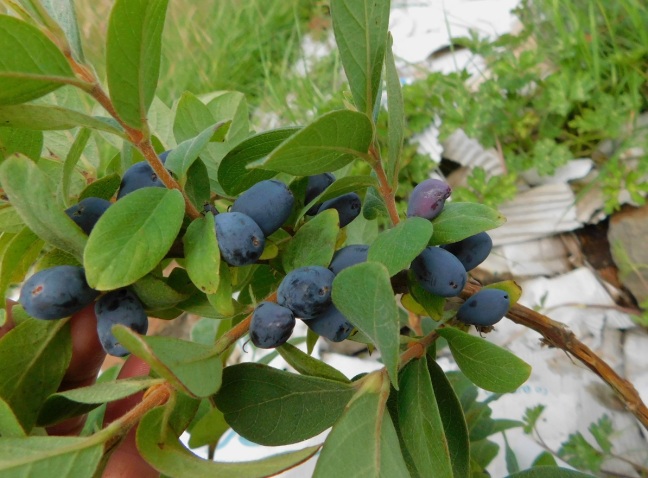


Rocket Mass Heater Plans: Annex 6" L-shaped Bench by Ernie and Erica
will be released to subscribers in:
soon!



 2
2





 2
2





How Permies works: https://permies.com/wiki/34193/permies-works-links-threads
My projects on Skye: The tree field, Growing and landracing, perennial polycultures, "Don't dream it - be it! "
 4
4




 3
3




Glenn Van Agten wrote:I'm planning to plant a windbreak around my haskap berry orchard. I'm posting to share my plans and welcome feedback before I get started.
Site:
Zone 4, clay soil, former hayfield. Prevailing winds are from the Southwest
4 acres of haskap berries, planted in 40 rows in a North/South orientation.
The haskap are very winter hardy, I have no issues with late spring/early fall frosts bothering the crop.
The windbreak will be 900ft/270m in total
While officially Zone 4, plenty of "zone 4"plants have winter killed here already. Spirea, blueberry, thornless blackberry, black walnut, hybrid hazelnuts. I even lost my first batch of black locust. So anything that is borderline zone 5 is not being considered.
Goals:
Reduce average windspeed, especially during the growing season Avoid need for pollination services for haskap. Attract and support natural pollinators by provide lots of nectar and shelter. Prioritize native species. Be visually appealing (it' will occupy a significant portion of the view from my house) Stack as many functions as possible
My Plan:
Plant a two-row windbreak on the South and West sides, totaling 900ft/270m:
1. An outer row of evergreen trees for maximum protection.
I'm planning to use white spruce, planted at 13ft intervals. To provide earlier wind coverage, it will be interplanted with Douglas fir. These will be grown as Christmas trees and cut when the white spruce need the space.
2. An Inner row of deciduous trees for diversity and pollinator food.
I'm going with a "trio" approach for the primary: 1/3 black locust, 1/3 basswood (Tilia Americana), 1/3 black cherry. These will also be spaced at 13ft, and interplanted with as many beneficial perennials as I can muster.
I started the black locust and basswood already, so they'll be on their second growing season when planted out. I plan to use tree tubes for the basswood, undecided on if the locust needs the deer protection.
The understory companion plants are selected for things that flower. Everything will be started either from seed or division from existing plants. The inventory I have in mind includes:
Caragana
Comfrey
Coneflower
Hyssop officinalis
Anise hyssop
Liatris
Wild bergamot (Monarda fistulosa)
Sedum for late season nectar/pollen
Anise hyssop
Hardy sage
The exact makeup will dependent on just how quickly I can propagate them. I had great success starting Coneflower from seed this spring so that will be prevalent.
There are some plants that I considereed, that are ultimately not on the my list for the moment.
Autumn Olive and Russian olive. Non-native and possibly invasive.
Black Walnut - I'm avoiding juglone near the haskap.
Bur Oak - native here and possibly stunning; but I had difficulty sourcing acorns to start
Red maple- -great tree, but I'm prioritizing flowers over catkins for nectar under the belief that flowers will attract more pollinators
Hopefully I'm not being too dreamy and this plan is sound for my needs. I welcome feedback, and I'll be posting pictures as I go to share lessons learned.
A build too cool to miss:Mike's GreenhouseA great example:Joseph's Garden
All the soil info you'll ever need:
Redhawk's excellent soil-building series





 1
1




 1
1





|
It's a tiny ad only because the water is so cold.
The new kickstarter is now live!
https://www.kickstarter.com/projects/paulwheaton/garden-cards
|





